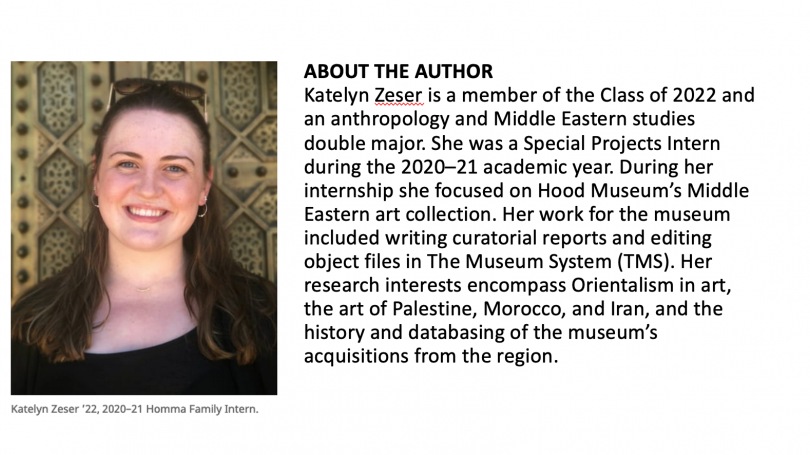
- Undergraduate
- Foreign Study
- News & Events
- People
Back to Top Nav
Back to Top Nav
Since the 18th century, Dartmouth has acquired thousands of objects from around the world. From coins and kitchen utensils to clothes, these items are important reflections of the diversity of global culture. Upon its founding in 1985, the Hood Museum of Art united many of these items under one roof, allowing for the rich abundance of artifacts, everyday objects, and art found in today's collection. Now, the museum creates holistic academic experiences and powerful cross-cultural connections by conserving, exhibiting, and teaching with these items. Without a doubt, they have deeply benefitted the Dartmouth community.
The database that the museum uses to organize and maintain its collection is called The Museum System (TMS). It is used by many museums across the United States and allows curators and registrars to digitally store object records, reports, and photos so that they won't get lost or destroyed. It also acts as an important tool with which museum staff can locate objects in the Hood Museum's collection. This specific function is very important, as there are thousands of items in the collection. Searching for a specific work of art or object is like trying to find a needle in a haystack, but TMS can make it happen with relative ease. Clearly, TMS is integral to our work at the museum. Like many other digital entities, of course, TMS was created to accommodate English speakers and the Latin alphabet. As a result, languages with other letters, different linguistic rules, and transliterations (the rendering of, for example, an Arabic word with English letters) were often left by the wayside during the digital transition, which shouldn't be too surprising because they were neglected before computers were invented as well.
As a Middle Eastern studies major and an up-and-coming Arabic speaker, I immediately noticed this problem. None of the objects in the collection from Arabic-speaking countries had Arabic names on record. Instead, there were loose (often incorrect or incomplete) translations, or sometimes, transliterations that were either overly simplified or just wrong. It's obvious I care a lot about making museums more equitable and accessible. While I'm not leading any repatriation efforts or creating museum policy, I saw a very clear way to make a change here. As a scholar of Arabic, I was in a unique position to fix the digital presence of Arabic works in our collection. Though I couldn't address the unequal power structures that enabled these objects to be at Dartmouth in the first place, I could make our digital footprint more accommodating and inclusive for Arabic speakers in our community. As a special projects intern, I had found my special project!
For the full Hood Museum article please click on the following link:
Appreciation of Arabic at the Hood Museum